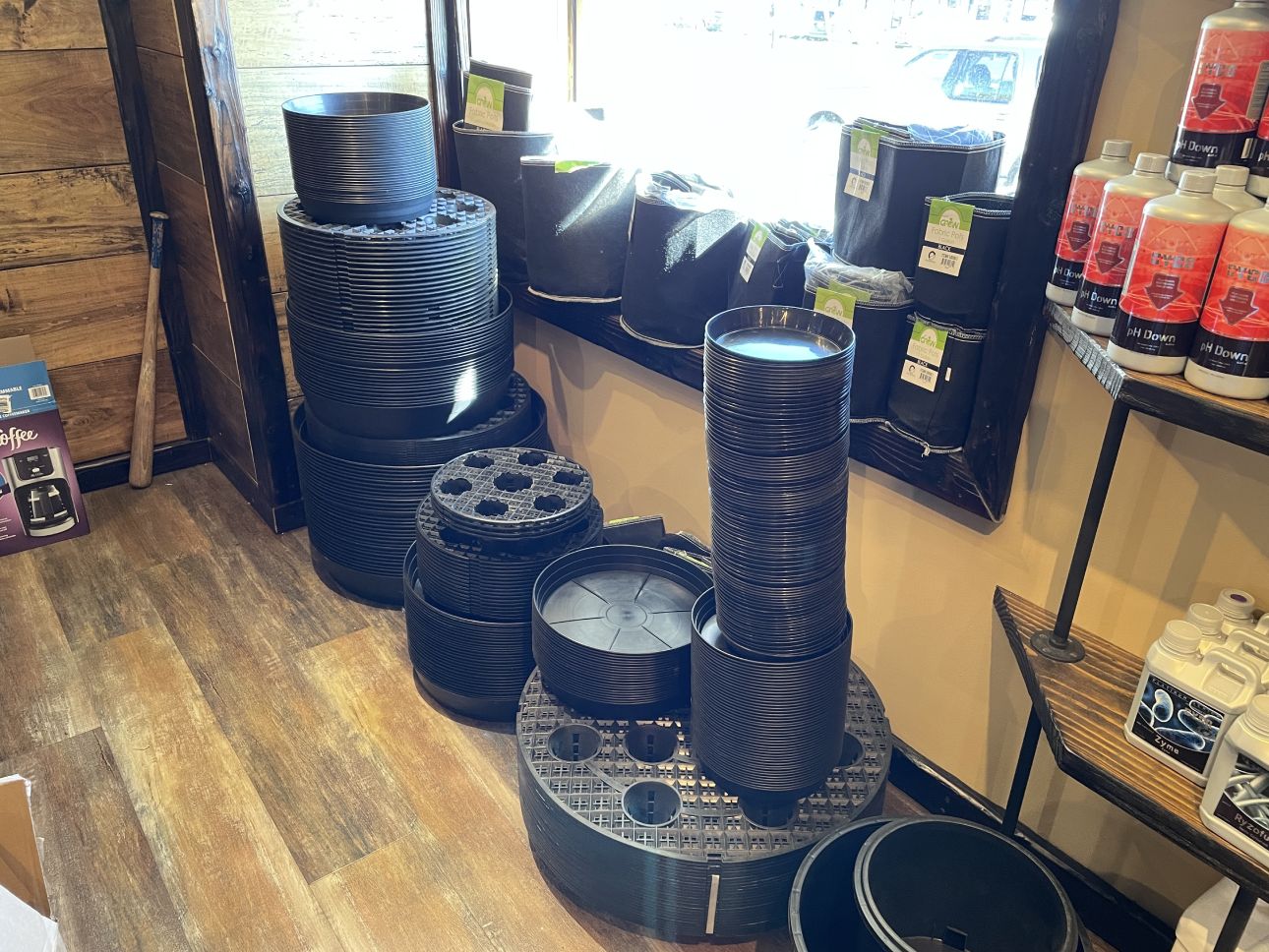Opening the Potential of Hydroponics: Recognizing Its Makes Use Of and Various Kinds
Hydroponics, an approach of growing plants without soil, has actually gathered raising interest for its potential to revolutionize farming and gardening techniques. As we browse with the elaborate landscape of hydroponic systems and methods, it becomes evident that each method holds distinct advantages and restrictions.
Advantages of Hydroponic Equipments

Another advantage of hydroponic systems is the capacity to expand plants in a smaller space. By eliminating the need for soil, plants can be expanded up and down or in piled systems, maximizing using offered space. This is particularly advantageous in urban areas or areas with limited cultivable land. Hydroponic systems minimize the danger of soil-borne illness and bugs, as there is no dirt to harbor these hazards. This leads to healthier plants and lowers the requirement for dangerous pesticides, making hydroponic farming a more lasting and environmentally friendly alternative.
Typical Makes Use Of in Agriculture

Given the efficient water conservation and space-saving advantages of hydroponic systems, it is noticeable that these ingenious farming approaches have actually located usual uses in numerous sectors of farming. In typical farming, soil-based farming can be land-consuming and labor-intensive. Hydroponics supplies an option by enabling plants to be expanded without dirt, minimizing water use by approximately 90% compared to conventional farming techniques. This makes hydroponics particularly appropriate for regions facing water shortage or restricted cultivable land. The regulated atmosphere of hydroponic systems makes it possible for year-round cultivation, offering a regular supply of fresh produce no matter of exterior weather condition problems.
Hydroponics is frequently made use of for growing a selection of plants, consisting of leafy environment-friendlies, tomatoes, cucumbers, herbs, strawberries, and peppers. Its convenience prolongs to vertical farming, city agriculture, and greenhouse manufacturing. Furthermore, hydroponic systems are utilized in research study and academic settings to study plant growth, cultivation, and nutrition methods. The adaptability and performance of hydroponics make it a valuable device in modern farming, dealing with the challenges of sustainability, food safety, and resource optimization.
Checking Out Different Hydroponic Techniques
What are the various cutting-edge techniques utilized in hydroponics to improve crop growing performance and generate? Hydroponic systems supply a variety of methods that provide to various plant kinds and farming goals. One preferred technique is the Deep Water Culture (DWC) system, where plant origins are immersed in a nutrient solution, providing sufficient oxygen and nutrients. Another commonly utilized technique is the Nutrient Movie Strategy (NFT), which entails a shallow stream of nutrient solution streaming over the plant origins, promoting water and nutrient uptake. Furthermore, the Ebb and Flow system, additionally called the Flooding and Drain system, periodically floods the plant roots with nutrient service, permitting for oxygenation during draining pipes durations. Aeroponics is one more sophisticated technique that entails misting plant origins with a nutrient solution, making the most of oxygen absorption and nutrient uptake. Each of these techniques showcases the versatility and efficiency of hydroponic systems in improving crop development and yield.
Comparing Different Hydroponic Solutions
Checking out the performance and return enhancement strategies in hydroponics leads us to contrast various hydroponic systems available for plant farming. Each hydroponic system has its unique functions, advantages, and restrictions, making it crucial for cultivators to pick the most suitable system based on their certain demands and restrictions.
Among the most typical hydroponic systems is the nutrient film strategy (NFT), where a slim film of nutrient remedy constantly moves over the plant roots. This system is valued for find out this here its water performance and viability for growing leafed eco-friendlies and natural herbs. On the other hand, the deep water society (DWC) system submerges plant roots directly right into the nutrient option, providing sufficient oxygen and nutrients. The DWC system is affordable and relatively simple, making it a preferred option for novices.
Another preferred hydroponic system is the ebb and circulation (or flood and drain) system, which occasionally floodings the plant origins with nutrient option prior to draining it. By recognizing the distinctions between these hydroponic systems, farmers can make enlightened choices to make the most of plant yield and top quality.
Innovations in Hydroponic Technology
One crucial advancement is the advancement of smart hydroponic systems that make use of helpful resources sensors and automation to keep an eye on and readjust ecological problems such as pH levels, nutrient concentrations, and light direct exposure in real-time. These systems allow precise control over growing problems, leading to optimum plant development and greater plant returns.
One more remarkable development is the combination of vertical farming strategies with hydroponic systems, allowing for the cultivation of plants in piled layers. This vertical technique takes full advantage of area use, making it perfect for city environments where land availability is restricted - The Indoor Earthworm. In addition, using innovative LED lighting systems customized to certain plant needs has actually boosted power effectiveness and boosted growth prices in hydroponic setups
Developments like these are driving the development of hydroponics, making it a extremely eye-catching and lasting choice for contemporary farming.
Verdict
In conclusion, hydroponics uses various benefits in agriculture and has numerous methods and systems that can be made use of to optimize its possibility. Innovations in hydroponic innovation proceed to improve effectiveness and sustainability in food production. By comprehending the uses and different sorts of hydroponic systems, farmers and farmers can unlock the complete potential of this read this article ingenious approach of growing plants without soil.
Additionally, hydroponic systems allow for far better control over nutrient degrees, pH balance, and environmental conditions, leading to healthier plants and greater returns.
